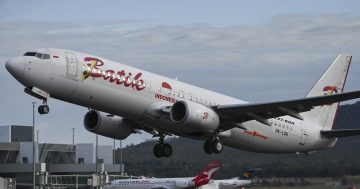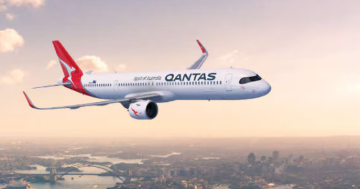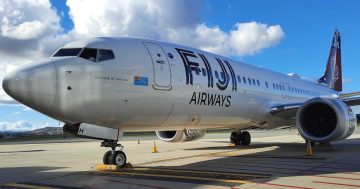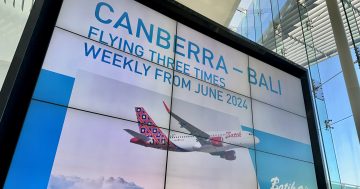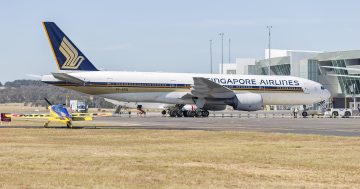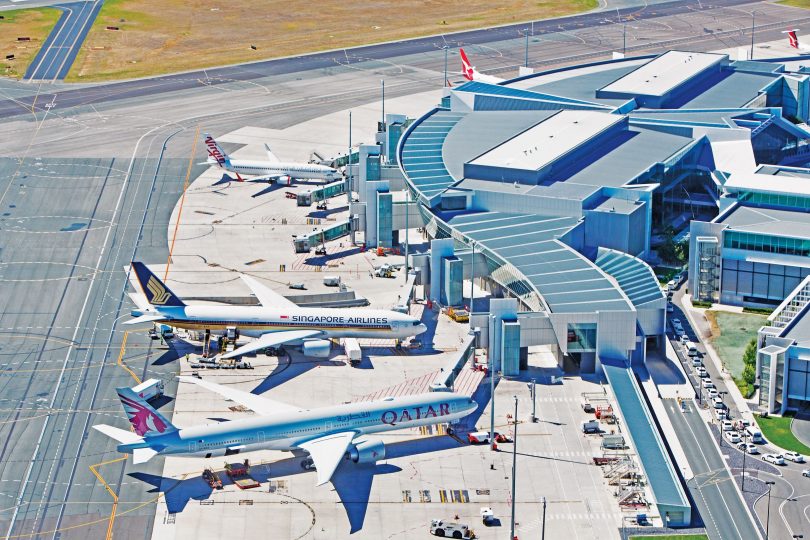
Singapore Airlines and Qatar Airways jets at Canberra Airport. They will return eventually, industry figures say. Photo: Canberra Airport.
Canberra Airport remains confident that it can win back Singapore Airlines, and Qatar Airways looks set to stick with the national capital but there is no doubt the pandemic has set back the airport’s international ambitions.
The airport is hurting as international and domestic border closures take their toll, although the air bridge that will open to Adelaide tonight (15 September) offers hope that the recovery has begun.
Before COVID-19, Canberra Airport was expecting to clinch direct connections to China, New Zealand and Vanuatu within eight years, according to its Master Plan released earlier in the year.
The 20-year strategic document also envisaged that by 2040 Canberrans would be able to fly direct to iconic overseas holiday destinations, with its international reach extending across the Pacific to Fiji, Hawaii and Los Angeles; and to the Asian centres of Bali, Kuala Lumpur, Bangkok and Hong Kong, while adding Dubai to its Middle Eastern link.
That timeline has hit turbulence with Singapore dropping the Canberra route as part of a general downsizing but Canberra Airport head of aviation Michael Thompson is still looking beyond Australian air space.
He told the ABC that Singapore’s Canberra route was very successful and that the airport had a very good relationship with the airline.
”We are very hopeful it will come back when international travel comes back,” he said.
That probably won’t be until the middle of next year but not many expect to see a Singapore Airlines jet in Canberra again so soon.
Aviation expert Geoffrey Thomas from AirlineRatings.com believes a Singapore return is probably off the cards for years.
Australian Aviation‘s Adam Thorn says Singapore will return eventually, but the industry is holding its breath and it all depends on what is going to happen in the next six months, particularly whether there will be a vaccine.
He said airlines such as Singapore were now making more substantive and long-term decisions as they hemorrhage revenue, and the industry is likely to come back 20 to 30 per cent smaller.
If a vaccine became available, things could bounce back quickly with so much pent-up demand.
One airline with deep pockets and burning ambition is state-backed Qatar, which Mr Thorn said saw the crisis as an opportunity to grow, and is likely to stay with Canberra.
”Qatar has been open in saying we’re going to keep our services going to Australia as much as possible because they want to build market share,” he said. ”They see this as an enormous opportunity to build market share and goodwill, and they want to be the biggest airline in the world.”
Mr Thomas said Qatar could continue linking with Canberra as part of a wider push to get more Australian rights.
Mr Thompson still believes the region is large enough and affluent enough to support an international airport.
”We’ve seen that with both Singapore and Qatar, but we need this virus under control,” he said.
Despite the setbacks, he was still talking to a Pacific carrier, which pre-COVID-19 had been in advanced negotiations.
”We’ll keep working on those opportunities when the time is right, and if you look at the Canberra region, it’s one that can sustain some of those flights,” Mr Thompson said.
Mr Thorn said airports such as Canberra and Avalon were desperate to be among the biggest operators in Australia.
”A year ago you’d say these airports have a very good chance but nobody really knows what the industry is going to be like in a year’s time,” he said.















